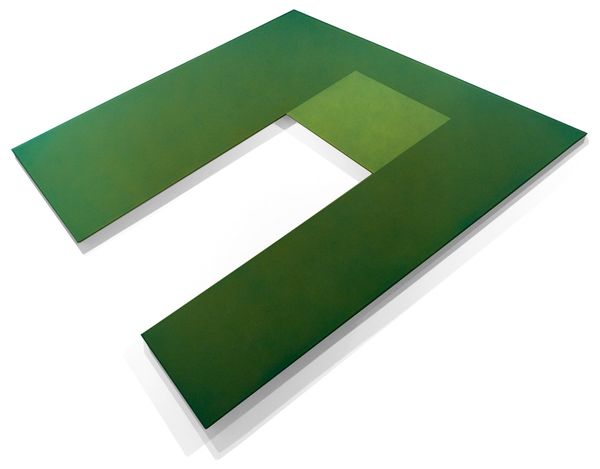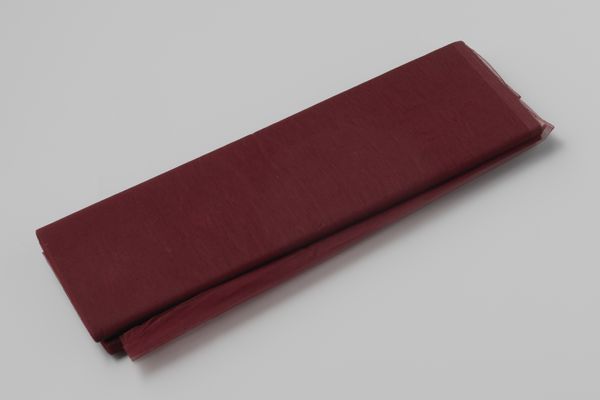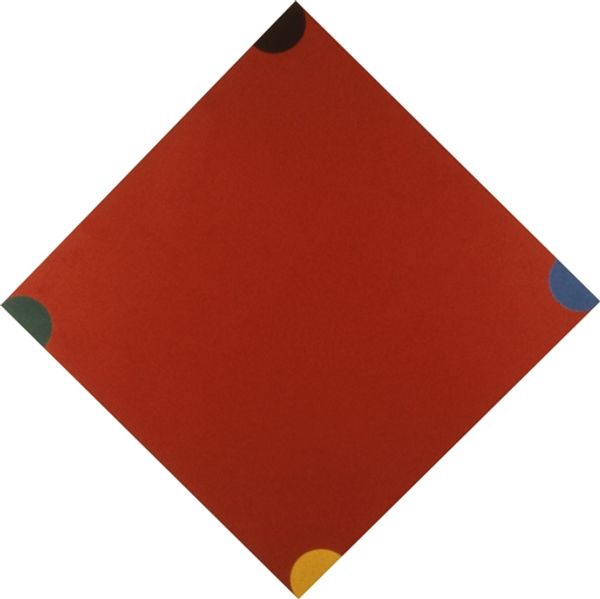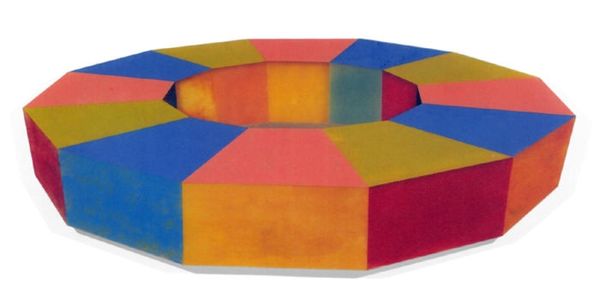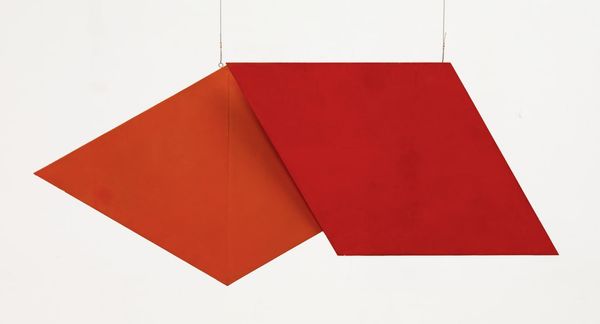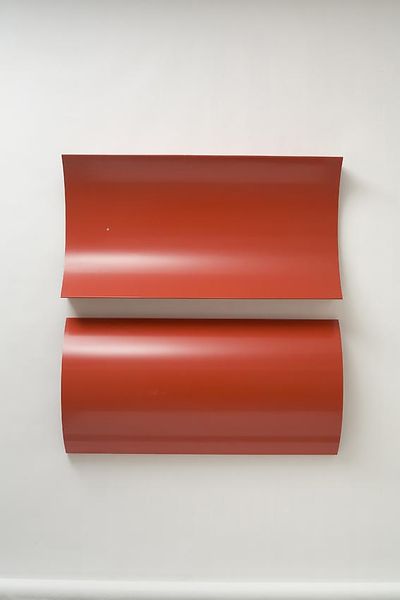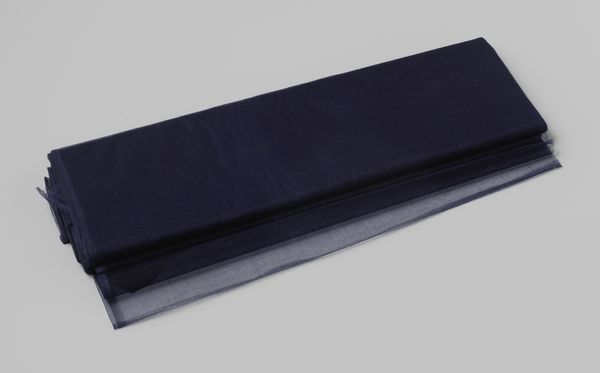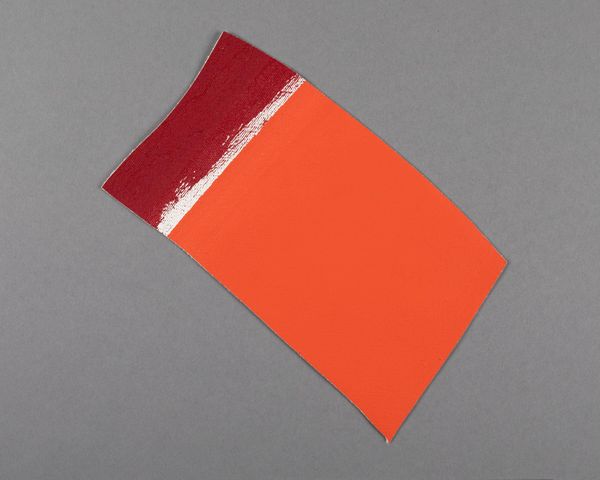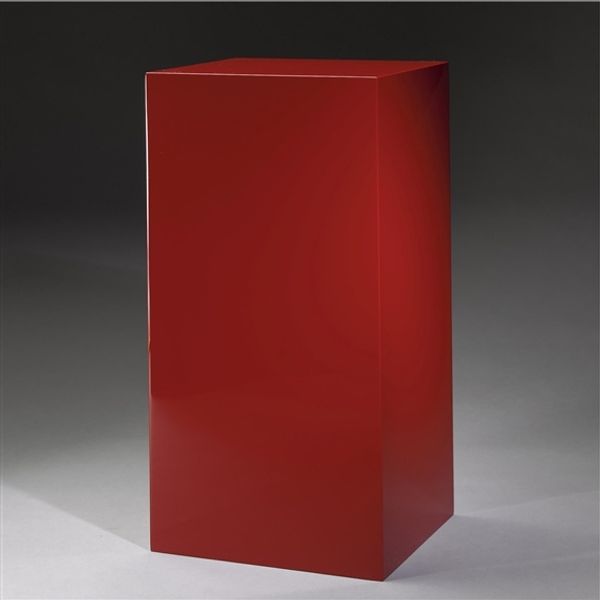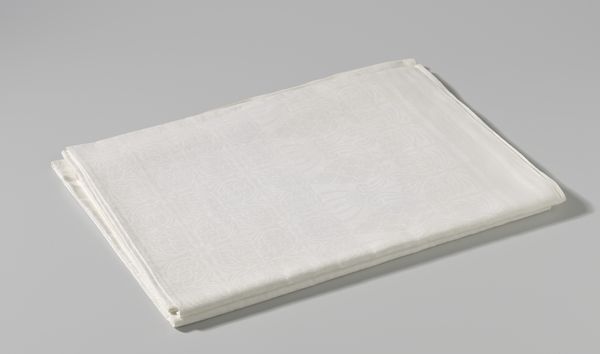
acrylic-paint
#
colour-field-painting
#
acrylic-paint
#
geometric
#
abstraction
#
hard-edge-painting
Copyright: Ronald Davis,Fair Use
Curator: Ronald Davis’s 1966 piece, “Six-Ninths Red,” employs acrylic paint in the service of geometric abstraction. The piece sits before us; what are your immediate impressions? Editor: There’s a brutal flatness to it. It feels sterile and a little unsettling, almost like an architect’s model for some kind of…minimalist fortress? Is this just meant to be aesthetic? Curator: Its aesthetic rigor is precisely where its power resides. Davis was working in a moment that privileges color, form, and spatial illusionism. Here, the interplay between the solid red elements and the hazy ground plane suggests an almost palpable tension, drawing on the hard-edge and colour-field movements of the time. Editor: But it’s hard to divorce this geometric exploration from, say, the Cold War anxieties present in the American consciousness at the time. The very concept of "hard edge" feels militaristic. And then this muted palette. Do we think Davis was considering social dimensions in this colour study? Curator: The title implies a systematic exploration of division, a numerical reduction to pure shape and colour. Its emphasis is internal, a self-contained system of visual logic, divorced from external referents or symbolic weight. I see it as about perceptual mechanics and the properties of space and line, rather than any kind of commentary on geopolitics. Editor: Even abstract formalism can reveal something of the context in which it emerged. Post-war American abstraction offered an implicit promise of renewal, and even utopia through simplification, a hope belied by history. I think that subtext lingers. Curator: Regardless of whether that lingering feeling is Davis's focus, it can be argued this precise execution and careful chromatic contrast demonstrates what it can unlock within its own parameters. Editor: So, while we diverge a bit on intent, we can perhaps agree the piece's reductive strategy is unexpectedly rich in its impact. Curator: Precisely. Hopefully listeners are invited to engage with both of our considerations.
Comments
No comments
Be the first to comment and join the conversation on the ultimate creative platform.
